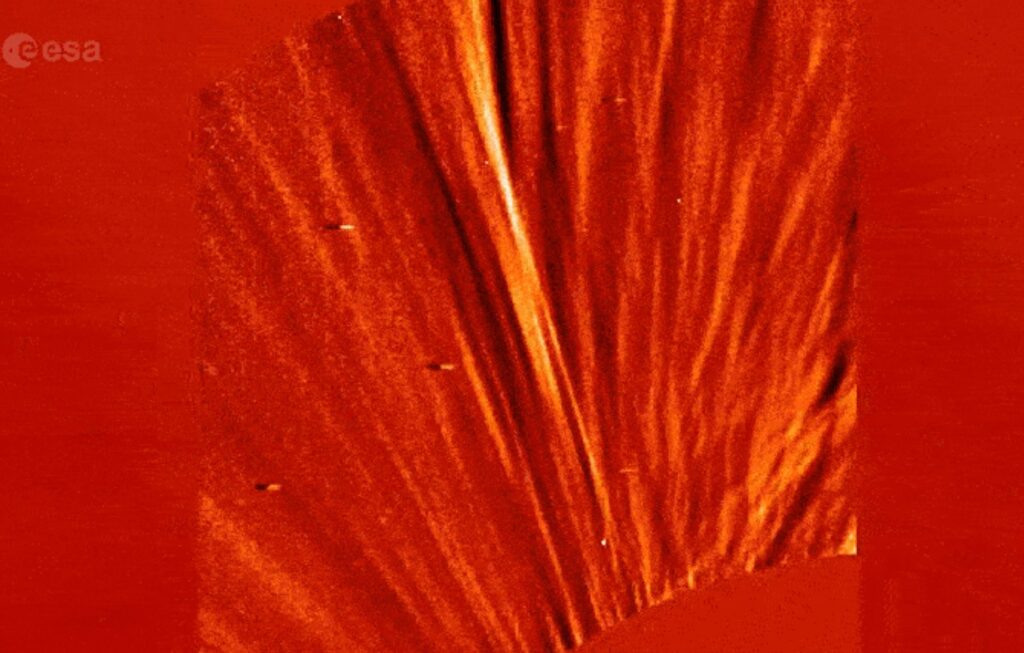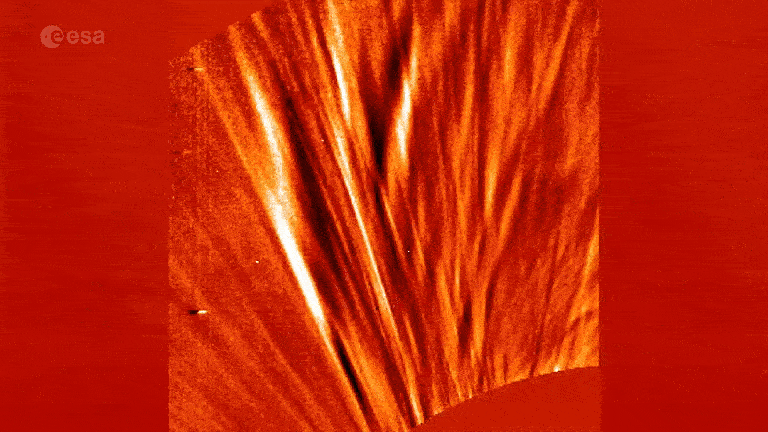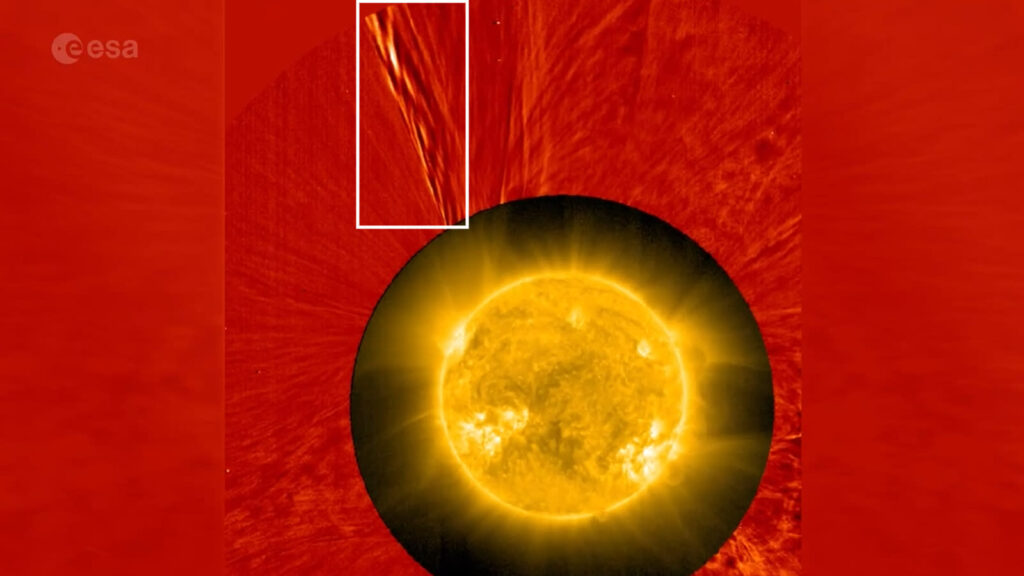Eerie ‘UFOs’ and Solar ‘Cyclone’ Captured in Stunning ESA Video

A newly released video from the European Space Agency has unveiled a captivating solar event never before captured on film. The footage shows a massive, spiraling plume of solar wind erupting from the sun in a rare, cyclone-like formation. This unprecedented moment was recorded by ESA’s Solar Orbiter on October 12, 2022, and made public on March 26.
The timelapse video, which condenses eight hours of observation, reveals a powerful stream of charged particles twisting and spiraling outward from the sun—resembling a giant space cyclone extending millions of kilometers into space. ESA scientists describe this motion as the first clear evidence of solar wind flowing in a whirling, tornado-like pattern.
Adding to the mystery, the video also features eerie, dark streaks gliding across the screen—resembling UFOs from a vintage arcade game. However, scientists clarified that these unusual shapes are actually distant stars, their appearances altered by a visual technique used in processing the footage.

The dramatic solar display occurred near the sun’s north pole following a coronal mass ejection, or CME, triggered by a solar flare. Researchers have identified the structure as a “large pseudostreamer,” stretching about 1.5 times the sun’s width and lasting roughly three hours.
According to the team’s study, published in The Astrophysical Journal, the spiral shape of the solar wind jet may be caused by Alfvénic waves—oscillations of ions reacting to magnetic field disturbances. The fact that the event took place near the sun’s magnetic pole may also explain its unique structure.
Interestingly, this phenomenon was captured before the sun entered its current solar maximum—a peak in its 11-year activity cycle—making the scale and timing of the eruption even more remarkable.
Scientists say that this rare glimpse helps unlock more secrets about the sun’s magnetic field and the behavior of solar wind—phenomena that can have direct impacts on satellites, space travel, and communication systems on Earth.
With missions like Solar Orbiter leading the way, researchers are closer than ever to decoding the sun’s powerful and often unpredictable nature.

Credit: ESA & NASA/Solar Orbiter/Metis & EUI Teams, V. Andretta and P. Romano/INAF







